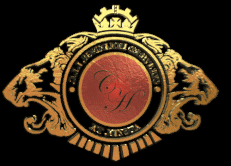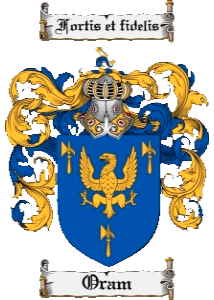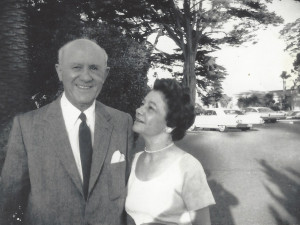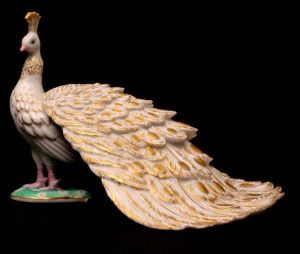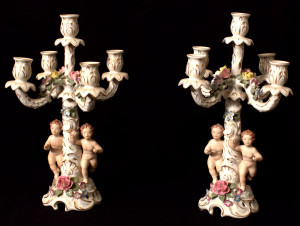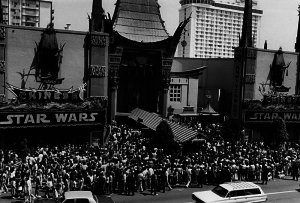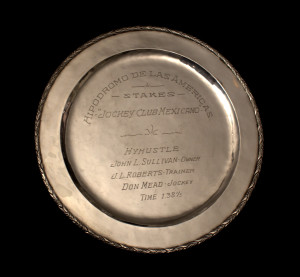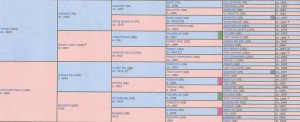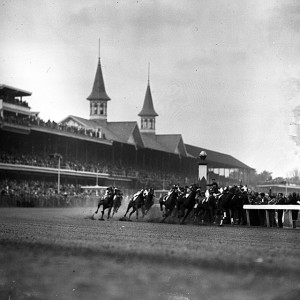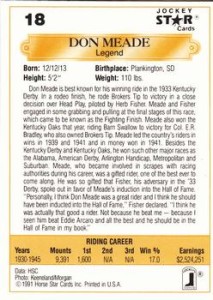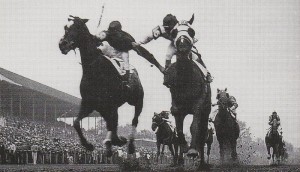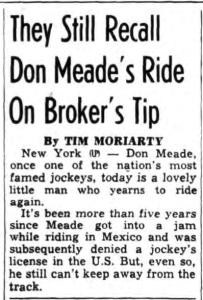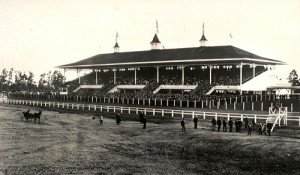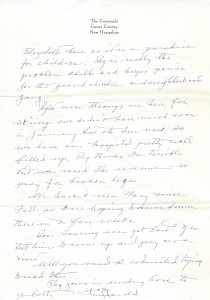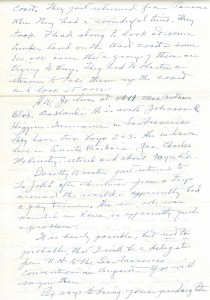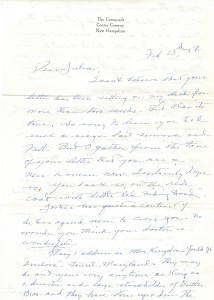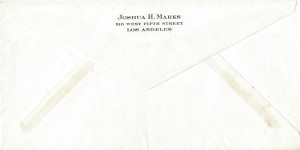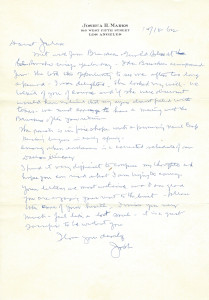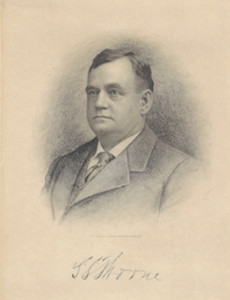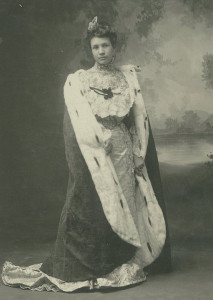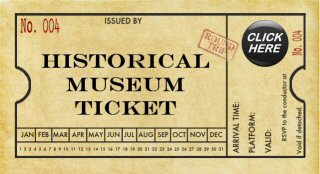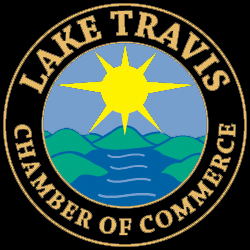Julia Thorne & Joshua H Marks
Julia Burton Thorne was married three times throughout her lifetime. Her third husband was Joshua Marks of California. His legacy is prominent even today throughout may of the notable landmarks that grace the beautiful city of Hollywood and the surrounding areas.
Julia’s art collection
The Jews of Los Angeles: Urban Pioneers: By Reva Clare
Two of Hollywood’s best known landmarks, Grauman’s Egyptian and Chinese (left) Theatres, were designed and built during the 1920s by Joshua H. Marks, who also originated the idea of placing stars in the sidewalks of Hollywood Boulevard to honor members of the motion picture industry.
Marks (right) designed and built the Santa Anita Race Track, the May Company’s Crenshaw store and portions of the Metro-Goldwyn-Mayer and Disney Studios. Joshua’s brother, David X. Marks, was a leader in establishing the Los Angeles Civic Light Opera association and was its Treasurer and Honorary President for life. During World War I, he served as a flying officer of the Royal Canadian Flying Corps. David donated funds to many Southern California institutions of higher learning. The tennis stadium at the University of Southern California is named in his honor.
Triple Crown trophy 1945
– Stakes –
1945 Stakes Jockey Club Trophy
This sterling silver tray was presented on New Years Day at the 1945 Stakes Jockey Club, Mexicano and was inevitably the last horse racing trophy that legend Don Meade would ever win. “Hyhustle” won two of the three triple crown events that year, before being disqualified and crippling, if not destroying Don’s racing career.
A Triple crown race can only be run by a 3 year old horse, making a win in such an event, one of the highest and recommendable achievements in horse lifetime. This race was held at Hipodromo De Las Americas, which is located west of Mexico City. It was owner of “Hyhustle” John Sullivan, that sparked Joshua’s inevitable interest with horse racing. He had previously worked closely with Gordon Kaufmann to design and building the Santa Anita racetrack in Southern California.
The Santa Anita track (left) is considered by many as the world’s most beautiful horse racing track. Jockey Don Meade Sr. from Florida had previously won the 1933 Kentucky Derby and had tremendous success through his entire career. His father was also a commendable jockey.
Reciprocity and Don Meade (below):
Don Meade
The current situation is light years away from where it stood in the middle of the 20th century. The most intriguing case is that of jockey Don Meade. Don Meade was a tremendously talented jockey in the 1930’s and 1940’s. He was the leading jockey in the nation in 1939 and 1941. He was regarded at that time as being in the same class of top jockeys with Eddie Arcaro, Ted Atkinson, and Johnny Longden. “He was heralded as being one of racing’s all time great jockeys.” Unfortunately, Meade consistently had a problem with racing officials. He often was suspended. (It’s perhaps fitting to view him as a mid century version of, Manuel Ycaza, Walter Case, and John Rocker.)
He was even suspended for a month after he won the Kentucky Derby on Brokers Tip in 1933 for grappled through the stretch with Herb Fisher the jockey on Head Play who finished in second place. He was the recipient of three lifetime suspensions. The last of these lifetime suspension occurred in 1945. Meade was riding in Mexico City in [July] of 1945, during the time period where racing in the United States during World War II had been suspended. The stewards announced that he had been suspended for “reprehensible conduct” which did not involve racing integrity. He was apparently accused of “making derogatory remarks about the Mexican people” “using abusive language with the stewards of the Mexico Jockey Club,” and/or simply having a run-in with a steward. Over the next several years, while the Mexican authorities would occasionally state that Meade had been punished enough, they never gave him back his jockey’s license. Under the rules of reciprocity then assumed to be in effect, Meade was not authorized to obtain a jockey’s license in the United States.
Meade Meets Reciprocity:
Nonetheless, in late 1950, Meade applied for a jockey’s license in Florida. By a vote of 3 -1, the commissioners granted him a one year probationary license. The dissenting vote was made by Leo Edwards, the chairman of the Florida commission who was also the vice president of the National Association of State Racing Commissioners [NASRAC] the umbrella body representing all the nation’s racing commissions. Edwards claimed that the grant of the license was a violation of NASRAC’s code. According to Edwards, “This is the first time that any member of the association has not lived up to the rulings of other members. That we the members of the association reciprocate with each other is the backbone of the association.” All hell soon broke loose. The Florida Attorney General called the decision to license Meade “unfortunate” and “regrettable.” “Howls of protests came from other state commissions.” NASRAC which had scheduled its annual convention for Miami Beach in January of 1951 threatened to move the conference to New Orleans.
Miami Beach hotel owners got involved to keep the convention in Miami Beach. There were plans made to expel Florida from NASRAC, and Edwards had planned to resign as Vice President of NASRAC. With so much pressure being placed on Meade and Florida, Meade withdrew his license application, taking the “Florida State Racing Commission off an uncomfortably hot seat of its own creation.” Meade may have thought that by withdrawing his application he would be given more sympathetic treatment when the NASRAC convention came to Miami Beach in January of 1951. That did not come to pass. Instead rather than act on Meade’s reinstatement, NASRAC passed a motion stating that reinstatement was only possible at the scene of the incident. It indicated that New York should hear Meade’s reinstatement, but it was not made clear whether New York would need to follow Mexico’s lead on reinstatement. Meade would apply periodically for a license after January 1951, but he would routinely be turned down because of reciprocity. It wasn’t until the summer of 1964 that Meade was granted a jockey’s license in Mexico. By that time, he was Meade was in his early 50’s and too old to work effectively as a jockey. Since, however, he had become licensed in Mexico, he was able to obtain a trainer’s license. The New York Racing Commission found that Meade was only licensable after he had been reinstated in Mexico.
Meade was not particularly successful as a trainer, and he had other careers including being a grocer in California and the owner of a pub in South Florida. He died in relative obscurity in 1996 at age 83 in South Florida. If he is known for anything it’s winning the Kentucky Derby in1933 and engaging in a pitched battle with the jockey of the second place horse during the race. Had he been suspended in 2005 rather than in 1945, all would have turned out differently for him Berating the stewards in 2005 would have gotten him a fine rather than a suspension. In a recent case where an owner severely berated the stewards in New York, the penalty was a fine of $3,000. Even if he had received a lifetime suspension in Mexico for berating a steward, it’s unlikely that many racing commission would have honored the suspension. They would have looked at it as an excessive penalty imposed by a foreign jurisdiction that could be waived. How do you end up serving 20 years for basically cursing at a steward? And it’s for certain that if a jurisdiction gave Meade a license to ride, the other racing commissions would not have threatened retaliation against the commission that licensed Meade. Nobody threatened a commission for licensing Walter Case or Herve Filion. If much of life is timing, Don Meade’s timing on his mounts may have been exquisite, but the timing of his suspensions was all wrong.
Poinsettia Park 1955
Poinsettia Park in Venture County was designed and built by Joshua Marks.

